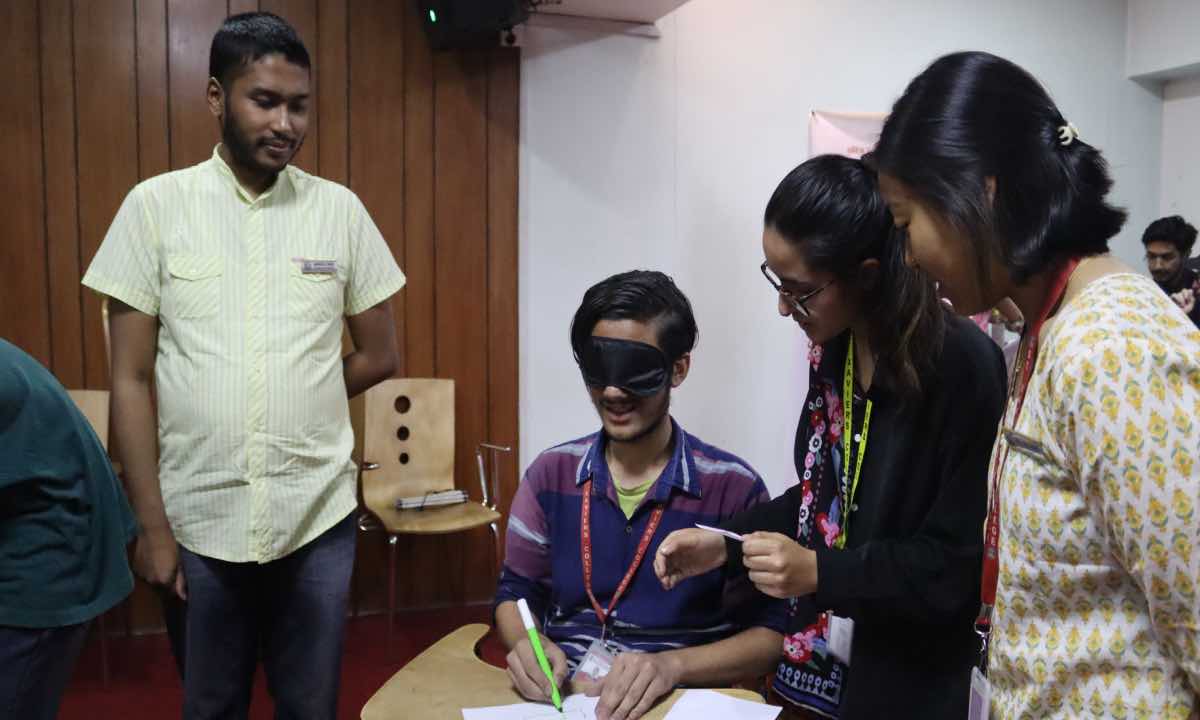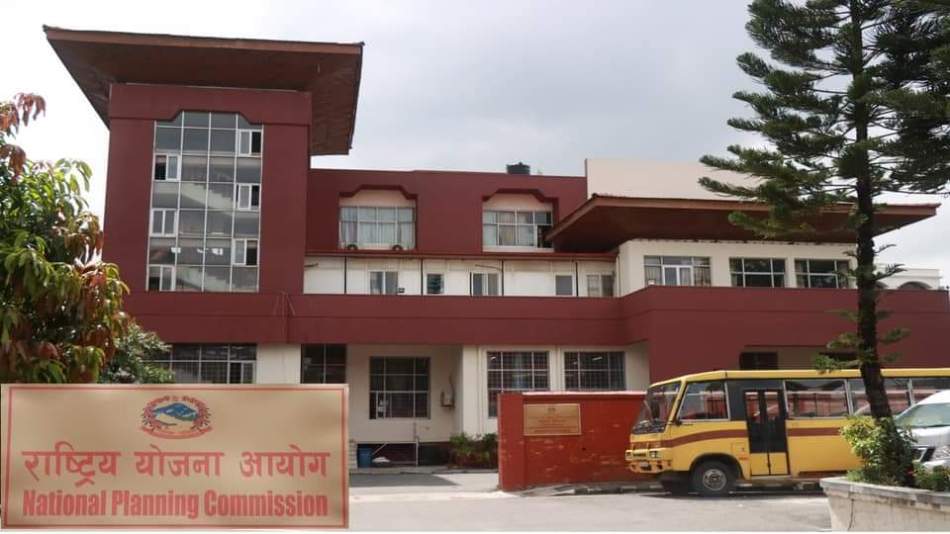
OR

More from Author
The biggest shortcoming of our education system is that we have not been able to engage the students. At times, our classrooms feel like jails to students
Teaching is an art of helping students to ‘learn’. Learning is always a ‘trial and error’ method. However, our education system is designed on the myth that the students do not know anything. So, the debate about improving our education system should not just focus on what to teach but how to teach as well.
A critical oversight is being made in one of our current teaching approaches. We are stopping our students from making mistakes. If the students do not make mistakes while learning in the classrooms how can they really learn? Classrooms must be like a practice match, where the students work hard, make mistakes, learn from those mistakes, improve upon them, learn to build teams and prepare for the actual match. But we are treating the classrooms like the finale and stopping them from making mistakes from which they can learn. Nepal needs three fundamental changes at the practical level in its education system.
Three changes
Take shift from memorizing. Why are we wasting the most productive times of our children in memorizing? We have established a concept that learning is memorizing and there is no need to understand what is really being taught. Since we made ourselves habituated to memorizing, we have forgotten to be creative. Our education system is making us dull and less practical. If we have studied for many years and yet do not know how to change tires, check electrical fuse or calculate the interest earned, what is the use of such education?
A five-year old child learns many things including speaking from her surrounding without any formal instruction. However once she goes to school to learn from trained and qualified teachers, why does her language skill get weaker? This is because she stops learning and starts reading to memorize. Our education system is diminishing the natural ability of a student to learn. A child falls down many times before being able to walk. Learning is a process, and we should not teach children a particular way to walk but help them along the way when they need help. That is an exemplary process of learning.
The prerequisite condition to improve teaching is to create an environment for students to learn. The teachers should play an assistive role and provide feedbacks to find the solutions where necessary instead of spoon-feeding them. If the students are put in an environment where they are given a task and allowed to make mistakes and improve upon them then they can learn and truly improve. We are led to believe that finishing up the presentation slides is completing the course, irrespective of whether the students understand them or not. How can we make such education relevant to the lives of the students?
Connecting content with stories. The biggest shortcoming of our education system is that we have not been able to engage the students. At times, our classrooms feel like jails to students. This is causing the students to get lazy and less creative. Hence, we need to engage them in a creative manner. Telling stories might become a great way to connect with, and engage the students. The stories would bring zeal to the classes, and create interest among the students. If we can connect the subjects with the lives of the students, then their interest in the subjects increases.
We have memorized the Pythagoras’ Theorem but we could not make the students understand that it is used to calculate the shortest distance in our journey or to determine the length of the ladders used in our homes. While teaching the Nepali alphabet Ka, we use a rhyme of Kapoori Ka but I only realized years later that the Kapoor used in the rhyme is a plant with fragrance.
For many students, calculus is a difficult topic in mathematics. I also used to find it difficult because my teachers never taught me where it would be used in the real world. They came to the classroom and wrote formulae and used to solve few problems from the book. I learned some from my friends and some from the guidebooks. After the examinations, my memory did not retain what I learned. If my teachers had told me about the use of calculus in real life or the story of the history of the dispute on whether Newton or Leibniz discovered calculus, then I might have studied the subject with more attention and interest.
Education should be fun and should be connected with life. If it becomes a burden then it will not be fruitful. The students should be encouraged to be engaged in the classrooms which helps them to focus more on the studies. My experience says that telling stories is a great way to engage the students in the classrooms and connect them with the subjects. Every subject and every equation has a story and the teachers should be able to find them. So, examples, stories, jokes, games and incidents related with the subjects should be shared with the students so as to increase their interests in the subject topic.
Teacher-student relationship. Successful teachers love two things, their students and their subjects. Teachers should try to engage each student in their classrooms. The teachers should make the students feel that they are important and they are cared for. Teachers should motivate and inspire the students, should ask the students about their hobbies, should remember their names, learn about their thoughts and feelings. These actions help to build a strong bond between the teachers and the students. If the teachers approach the students sitting at the last benches whether they understand what is being taught and prompt them to ask questions, it would increase their interest in the subjects. However, if the teachers do not move from their chairs, they cannot connect with the students sitting at the back.
Teachers should have three qualities—being their natural self, putting students at the centre and teaching in a simple manner. First, when the teacher tries to act unauthentic, they cannot establish a connection with their students. Second, teachers should put the students at the center and not themselves because they understand that the students are the first center of education. Teaching process is not like copying electronic files from a computer to a pen drive—where the teachers speak and the students listen. The bitter truth is that the students can learn without the teachers but the teachers are incomplete without their students. We have not taught an eight months old toddler to walk and to speak, nor have teachers taught them to speak. Learning is a natural process and the teachers just aid the process through an interactive manner.
The third characteristic of successful teachers is explaining things in a simple manner. If the teachers cannot communicate the concepts in a simple manner, the only reason is because they have not understood the concepts themselves. Famous physicist Richard Feynman was once asked to explain a concept about physics. As his students did not understand what he was trying to communicate, he asked for a few days’ time to prepare so that he could explain the concept in a simple manner.
Later, he admitted that he had not understood the concept clearly because he could not explain it in a simple manner. If Feynman had the humility to admit that he had not understood some concepts of physics well, we should not be arrogant to accept our shortcomings. I feel we are deceiving the students by not being upfront about our abilities. If teachers cannot explain the terms to a fifth grader, then we should note that they have not understood the concept themselves.
Think new
Imagine the state of the students who do not have the patience to listen to their parents for even five minutes and then have to bear the eight hours of lecture from the teachers daily. Now, we need to stop the practice of teachers speaking in the classrooms and their students listening in silence. The idea of engaging the students in classroom in some developed countries can also be relevant here. The teacher could divide the classrooms in the groups of four to eight and ask the students to study the lessons that they have for the day. Each group studies that chapter and asks the teacher about their confusions and makes presentation in their classroom. This way, we can help the students to learn, and also make presentation about what they have learned. Such interactive activities also improve their analytical ability.
The teachers could help with a supporting role and allow the students to take a lead. If we do not let students dive deep into their subjects, how can we foster new ideas in them? Since a while, we have seen some changes in our education. Books are being converted into e-books, the white boards are converting to YouTube channels, and online courses have started. My worry is that we have looked for new medium but have not started a debate in changing the methodologies—where the major problems lie. Education should be purposeful, meaningful and most importantly useful.
Twitter: @MilanPandey
You May Like This

The Modi ripples
When two elephants make love, the Tibetans get squeezed out from India and, it will not be a matter of... Read More...

Missing Nepal differently
While in an advanced American hospital, I thought of hospitals back home, villages where women are forced to give birth... Read More...

Tax exploitation in Nepal
High taxation policy pursued by Nepal has worked as a powerful drag on the economy by hurting private sector incentive... Read More...







Just In
- First meeting of Nepal-China aid projects concludes
- Lungeli appointed as Minister for Labor and Transport in Madhesh province govt
- Bus knocks down a pilgrim to death in Chitwan
- One killed in tractor-hit
- Karnali Chief Minister Kandel to seek vote of confidence today
- Chain for Change organizes ‘Project Wings to Dreams’ orientation event for inclusive education
- Gold price decreases by Rs 200 per tola today
- National Development Council meeting underway













Leave A Comment